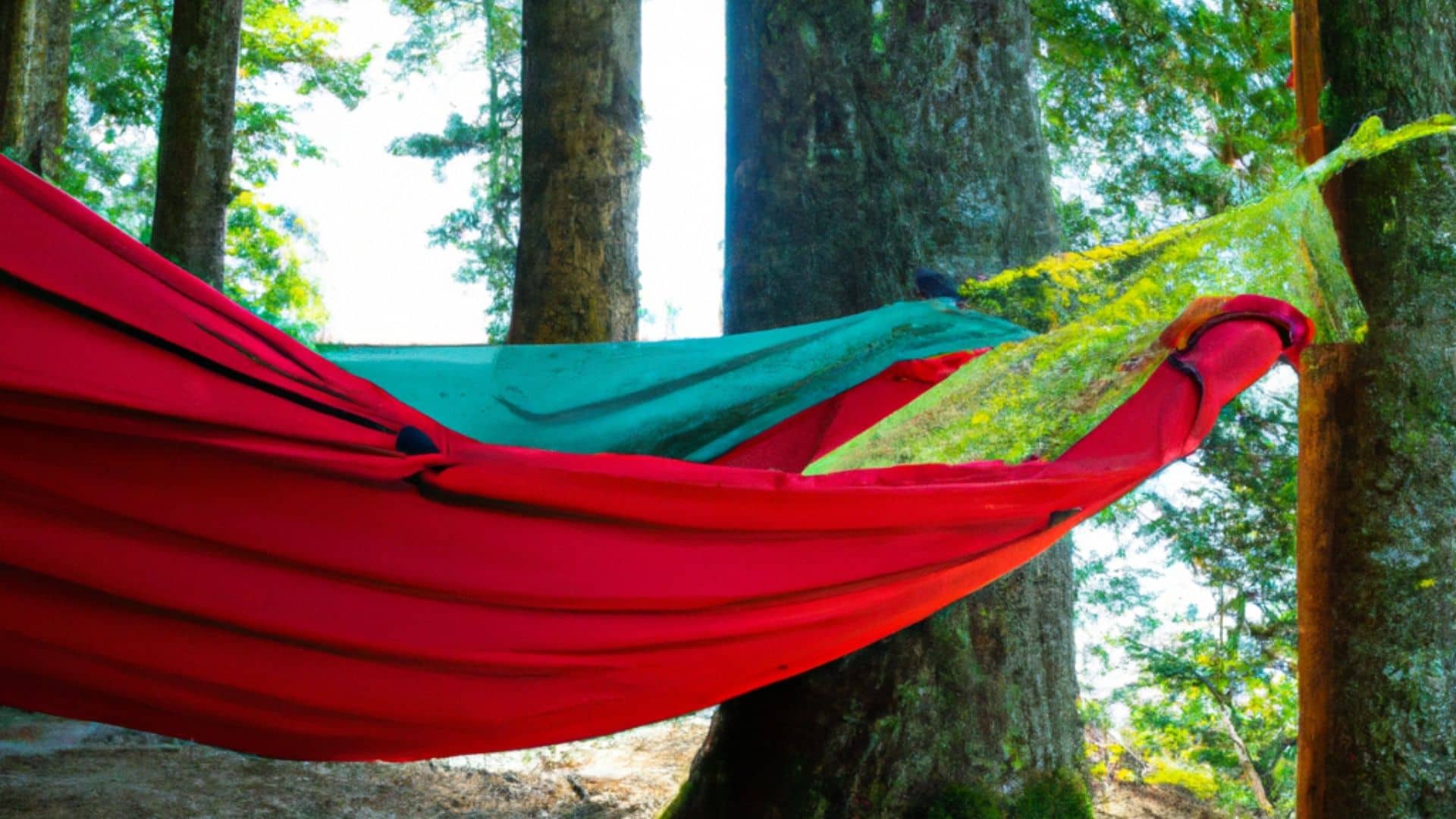Hammocks are a great way to relax and enjoy the outdoors. However, many people wonder if hammock straps can cause harm to trees. After all, trees are a precious resource, and it’s important to take care of them. The good news is that with the right knowledge and techniques, hammock straps can be used without harming the trees. In this article, we’ll explore the impact of hammock straps on trees and provide tips on how to set up your hammock in a way that is safe for both you and the environment.
Do Hammocks Harm Trees?
How Do You Hang a Hammock Without Damaging a Tree?
Hanging a hammock without damaging a tree is possible with the use of straps. There are many brands and types of straps available on the market, but finding the right one for you will depend on a few factors. The size and type of tree you have will be the biggest deciding factor in which strap to choose.
If you have smaller trees, you’ll want to look for lighter-weight straps that won’t damage the bark. For larger trees, you can go with heavier-duty straps. You’ll also want to consider how easy it is to set up and take down the straps, as well as how comfortable they are to lie in.
When attaching the straps to the tree, it’s important not to wrap them too tightly around the trunk. This can damage the tree’s bark and even kill it over time. Instead, loop the strap around the trunk loosely and pull it tight only when you’re ready to hang your hammock.
Once everything is secure, lie back and enjoy!
How Do You Protect Trees from Hammock Straps?
Hammocks are a great way to relax outdoors, but it’s important to be mindful of the impact they can have on trees. When used properly, hammocks can be a low-impact option for enjoying nature. Here are some tips for using hammocks in a way that minimizes damage to trees:
– Use wide, flat straps instead of rope or cord, which can dig into bark and cause injury.
– Avoid attaching hammocks directly to tree branches, which can put unnecessary stress on the limb and potentially cause breakage. Instead, use tree trunk protectors or wrap the strap around the trunk itself a few times before securing.
– Inspect trees before setting up your hammock to look for any signs of weakness or damage that could make them unsafe. If you’re not sure, err on the side of caution and choose another location. By following these simple guidelines, you can enjoy your hammock without harming the trees!
Are Eno Straps Safe for Trees?
Yes, Eno (Eagles Nest Outfitters) straps are safe for trees when used correctly. Eno straps are designed to be tree-friendly and are made from durable materials that are unlikely to cause harm to trees. However, it’s important to use the straps properly and to follow the manufacturer’s instructions carefully. When setting up your hammock, make sure to choose healthy,
mature trees with sturdy trunks, and avoid using the straps on trees with bark that is easily damaged. Additionally, it’s essential to avoid over-tightening the straps, as this can cause unnecessary pressure on the tree. By using Eno straps responsibly, you can enjoy a safe and comfortable hammock setup while preserving the natural environment around you.
How Do You Tell If a Tree is Safe to Hang a Hammock?
When choosing a tree to hang your hammock, safety is of the utmost importance. Here are a few things to look for when determining if a tree is safe for hanging: -The tree should be of sturdy construction and free of any dead branches or other potential hazards.
-The tree should be large enough to support the weight of the hammock and its occupants. -The limbs of the tree should be strong enough to hold the weight of the hammock without sagging or breaking. -The bark of the tree should be smooth, without any sharp edges that could potentially damage the Hammock.
Read also: Tying Hammock Straps: A How-To Guide
How Far Should Trees Be from Hammock?
When it comes to finding the perfect spot to set up your hammock, there are a few things you’ll want to take into consideration. One of those things is how far away from trees you should be. Ideally, you should have about two feet of clearance on either side of your hammock.
This will give you plenty of room to get in and out of the hammock without having to worry about hitting a tree. Of course, this isn’t always possible depending on where you’re setting up your hammock. If you don’t have two feet of clearance on both sides, try to at least have one foot of clearance on one side so you can still get in and out easily.
As long as you have some clearance on either side, you should be good to go! So find yourself a nice spot with some trees and get ready for some relaxation time in your hammock.
Leave No Trace Hammock Straps
When it comes to hammock straps, the Leave No Trace ethic should be at the forefront of your mind. That means using straps that are durable and won’t damage trees, as well as being easy to remove when you’re done using them. There are a few different types of hammock straps on the market, but our favorite are the ENO Atlas Hammock Straps.
These straps are made from polyfilament webbing, which is strong and won’t stretch or tear easily. The webbing is also thin enough that it won’t damage tree bark. The Atlas Hammock Straps also come with aluminum buckles, which make it easy to adjust the length of the straps and get a tight, secure fit.
And when you’re ready to take them down, simply unbuckle the straps and they come right off – no knots or tangles to worry about. For an even more eco-friendly option, check out the Hummingbird Single Tree Hammock Straps. These straps are made from 100% recycled materials, including post-consumer waste like recycled plastic bottles.
They’re also super lightweight and can be packed up small – perfect for backpacking trips.
Conclusion
In conclusion, hammock straps can be a safe and tree-friendly way to enjoy the outdoors, provided they are used properly. When selecting your straps and trees, choose options that are designed to be tree-friendly and healthy. Be sure to follow the manufacturer’s instructions carefully and avoid over-tightening the straps. With the right setup and care, you can enjoy the relaxation and tranquility of a hammock without harming the trees and environment around you. Remember, it’s up to all of us to preserve and protect our natural resources, so be responsible and enjoy your hammock experience!
Our latest posts
A Beginner’s Guide to Using Hammock Straps

